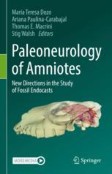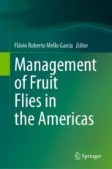Search
Search Results
-
Age-related changes in antioxidant defenses of the Mediterranean centipede Scolopendra cingulata (Chilopoda)
The activity of superoxide dismutase (SOD), catalase (CAT), glutathione peroxidase (GSH-Px), glutathione reductase (GR), and glutathione...

-
Endocranial cast anatomy of the Early Miocene glyptodont Propalaehoplophorus australis (Mammalia, Xenarthra, Cingulata) and its evolutionary implications
Propalaehoplophorus is an Early Miocene genus of glyptodonts, a group of extinct armored mammals closely related to armadillos and endemic to South...

-
Individual identification of armadillos (Mammalia, Cingulata) using a photo-identification software
The scales of the head shield of armadillos form a distinctive pattern which facilitates a reliable identification of individuals. Comparing images...

-
A New Glyptodont (Xenarthra: Cingulata) from the Late Miocene of Argentina: New Clues About the Oldest Extra-Patagonian Radiation in Southern South America
Glyptodonts (Xenarthra, Cingulata) are one of the most amazing Cenozoic South American mammals, with some terminal forms reaching ca. two tons. The...

-
The Early Eocene Climatic Optimum at the Lower Section of the Lumbrera Formation (Ypresian, Salta Province, Northwestern Argentina): Origin and Early Diversification of the Cingulata
Recently, the basal beds of the lower section of the Lumbrera Formation have been referred to the early Eocene (Ypresian) based on the identification...

-
The Dorsal Integument of the Southern Long-Nosed Armadillo Dasypus hybridus (Cingulata, Xenarthra), and a Possible Neural Crest Origin of the Osteoderms. Discussing Evolutive Consequences for Amniota
Osteoderms are present in most tetrapod lineages with considerable lineage-specific variation. It has been hypothesized that osteoderms are a case of...

-
Development of simple sequence repeat markers based on whole-genome sequencing to reveal the genetic diversity of Glomerella cingulata in China
Glomerella leaf spot (GLS) has been found on apple trees in China since 2011 and severely affects apple production ( Malus domestica Borkh.). The...

-
Site occupancy of Dasypus novemcinctus (Mammalia, Cingulata) and daily activity of four armadillo species in the Uruguayan Savanna and southern Atlantic Forest
Site occupancy and daily activity remain mostly unknown for many species of armadillo. Seeking to address this issue for four cooccurring species ( Cab...

-
The application of bacteria-derived dehydrogenases and oxidases in the synthesis of gold nanoparticles
AbstractIn this work the green synthesis of gold nanoparticles (Au-NPs) using the oxidoreductive enzymes Myriococcum thermophilum cellobiose...

-
Paleoneurology of Extinct Cingulates and Insights into Their Inner Ear Anatomy
Xenarthrans, a largely endemic group originating in South America, constitute one of the four major clades of placental mammals. The order Cingulata...
-
Geometric morphometrics as a tool to identify Dasypodini osteoderms: Implications for the oldest records of Dasypus
Cingulata (Mammalia, Xenarthra) is one of the most conspicuous clades in the Cenozoic fossil record of South America, largely due to the high...

-
Variability of Isotope Composition (15N/14N and 13С/12С) in Tissues and Organs of Mediterranean Soil Invertebrates
AbstractIn recent decades, various isotopic methods have been widely used to study trophic relationships in soil ecosystems, because the isotopic...

-
Intermediary floral traits between natural hybrid and its parents in the **quexique (Cactaceae)
Hybrid systems represent ‘new ecological opportunities’, as the changes in their vegetative and reproductive traits may facilitate colonization of...

-
Isolation and identification of Arbutus unedo L. fungi endophytes and biological control of Phytophthora cinnamomi in vitro
Strawberry tree ( Arbutus unedo , Ericaceae) is an evergreen tree with a circum-Mediterranean distribution. It has a great ecological and economic...

-
Emergence of Amphibious Insects from an Old Beaver Pond in the Upper Khoper Valley under Conditions of the Forest Steppe
AbstractThis work presents the results of studies of the emergence of amphibiotic insects from the old beaver pond on the Yuzhnaya River of the...
-
A Review of the Conservation Status of Neotropical Mammals
The Neotropical region is probably the most biodiverse on the planet. It contains around 1700 species of mammals grouped in 15 orders. The number of...
-
Colletotrichum species causing anthracnose disease in A. andraeanum, manifested as spathe rot also in addition to spadix rot and leaf spot.
Anthurium is an ornamental flowering plant, cultivated in tropical and sub-tropical climates. Anthracnose is a major disease in anthurium, known to...

-
Ethnomedicinal Uses, Phytochemistry, Medicinal Potential, and Biotechnology Strategies for the Conservation of Orchids from the Catasetum Genus
Catasetum is a genus of the Orchidaceae family with approximately 170 species, some of which have been reported with medicinal properties in...
-
Xenarthrans of Brazilian Amazonia: Recent Discoveries, Knowledge Gaps, and Conservation Concerns
Here, I summarize the recent changes in xenarthran taxonomy, analyze past collection efforts, and discuss knowledge gaps in Amazonian xenarthrans....
-
Fruit Flies: A Threat to Fruit Production in the Americas
This chapter briefly introduces the basics of fruit fly management in the Americas. A total of 21 species of fruit flies belonging to the genera...
